Since the pandemic started, Australia’s rents have experienced extreme growth as a result of record net overseas migration.
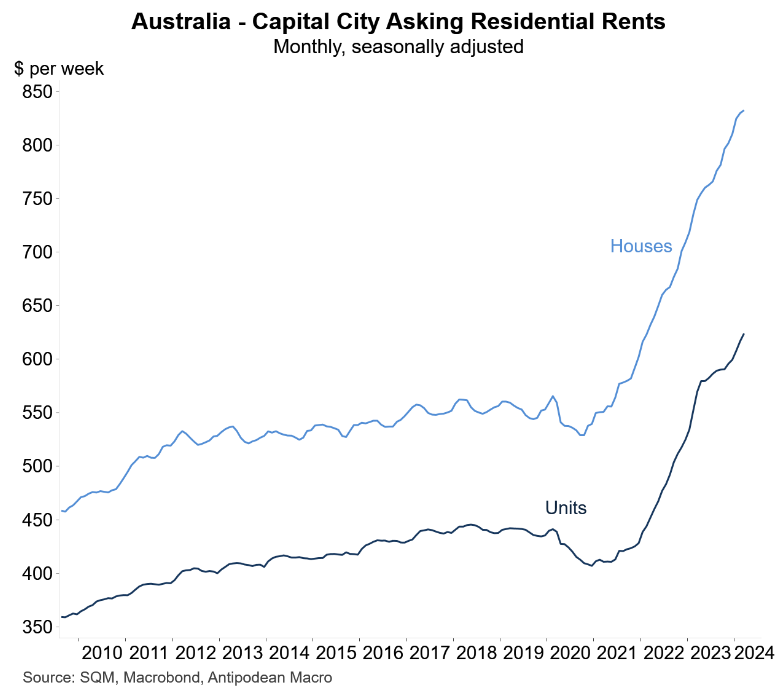
The surge in rents has pushed PropTrack’s rental affordability index to a record low:
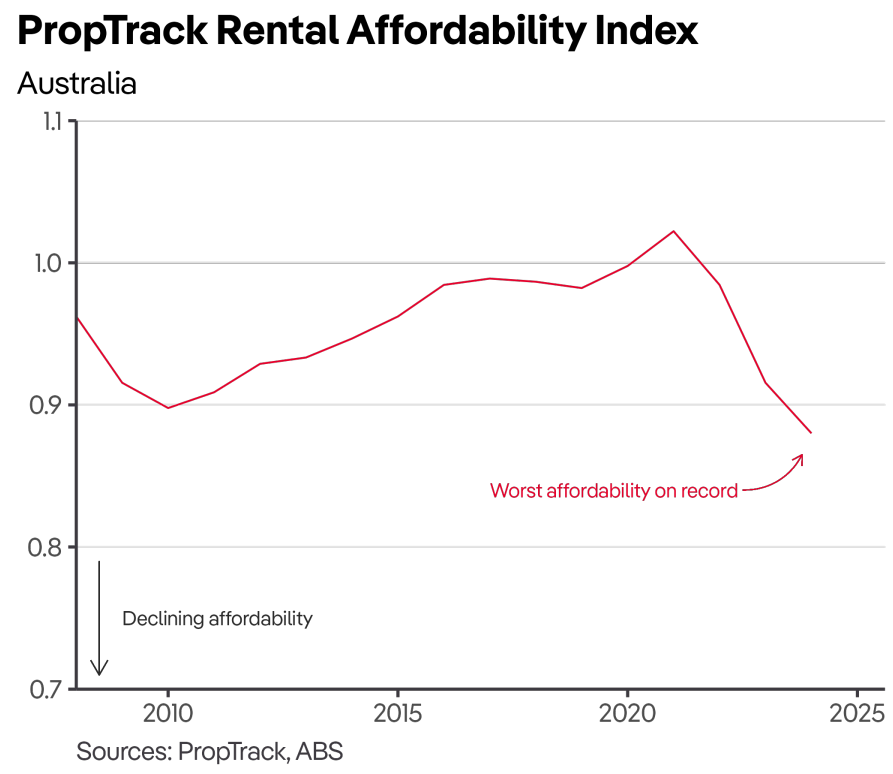
It has also pushed the share of household income spent on renting to a record high of 32.2%:
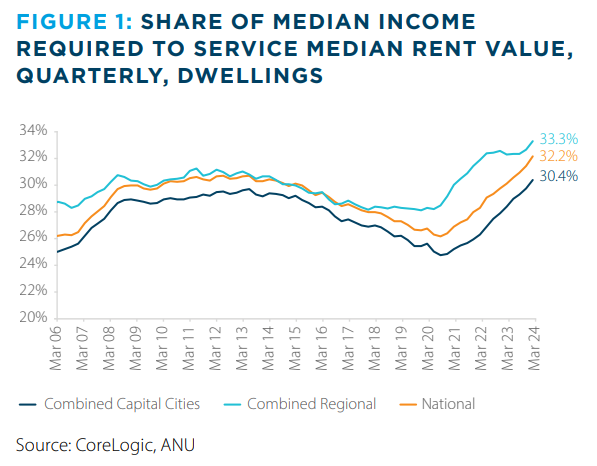
Recent research from the Australian Housing and Urban Research Institute (AHURI) showed that higher income households (i.e., with annual incomes of $140,000 and above in 2021 dollars) grew from 8% of the private rental market in 1996 to 24% in 2021.
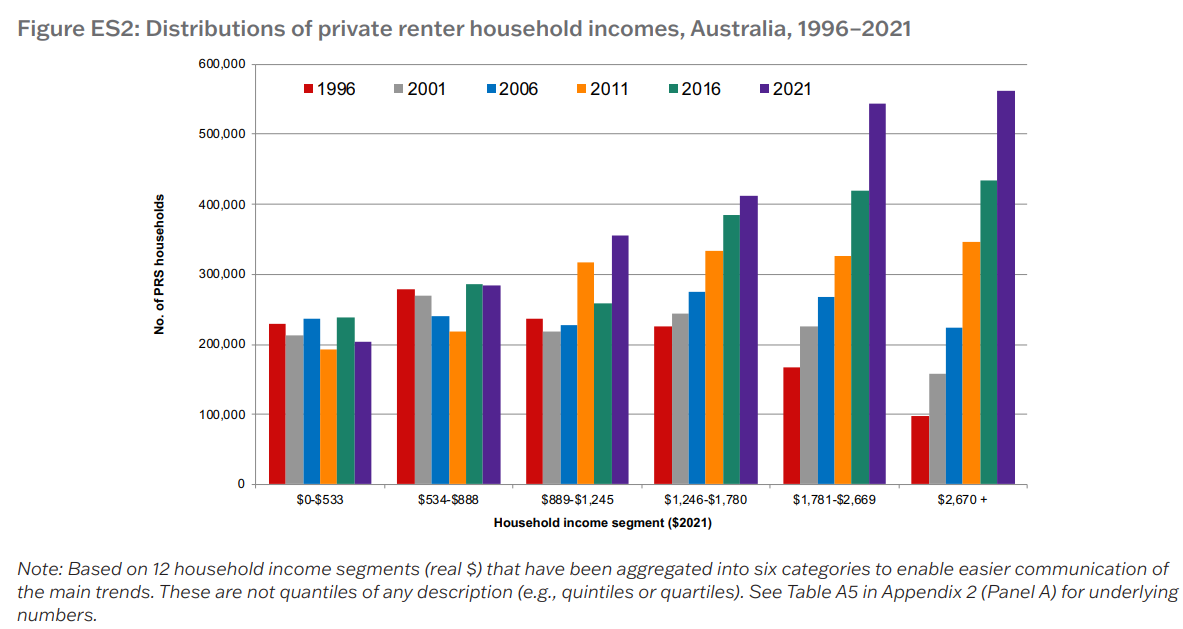
This data precedes the massive lift in rents over the pandemic, so the situation has likely exacerbated since.
Nevertheless, data from PropTrack shows that rental affordability has deteriorated most for lower income households:

Likewise, CoreLogic data shows that the bottom one-quarter of household incomes have seen the largest decline in rental affordability:
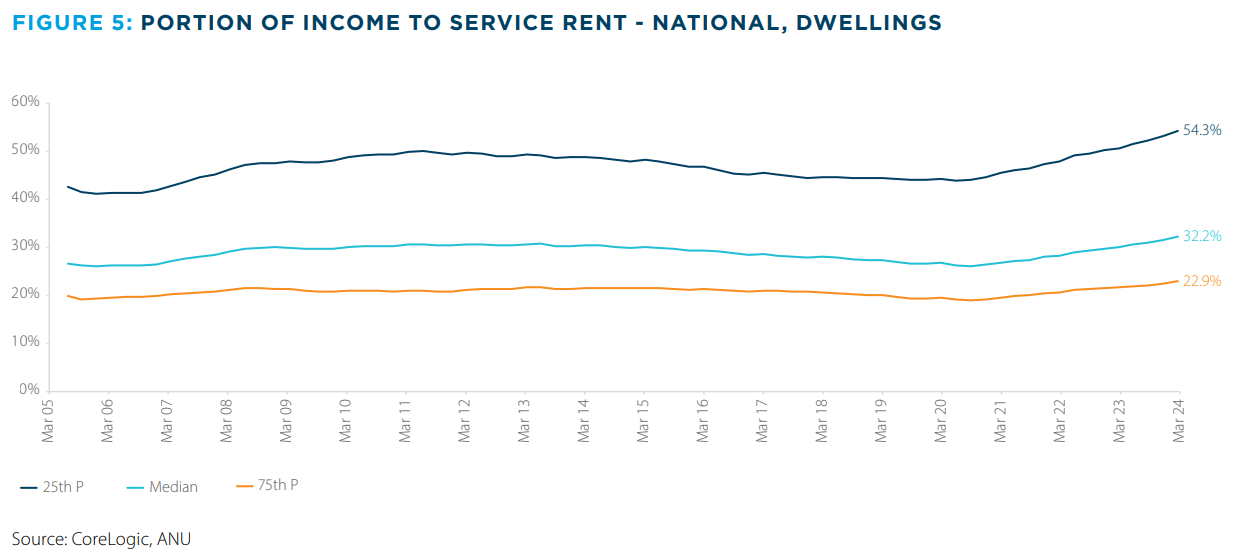
Indeed, since the beginning of the pandemic in March 2020, national 25th percentile rents have risen the most in percentage terms, up 42.3% (or $155 per week).
This compares to a median rise of 41.4% ($182 per week) and an increase at the 75th percentile value of 37.4% ($204 per week), according to CoreLogic:
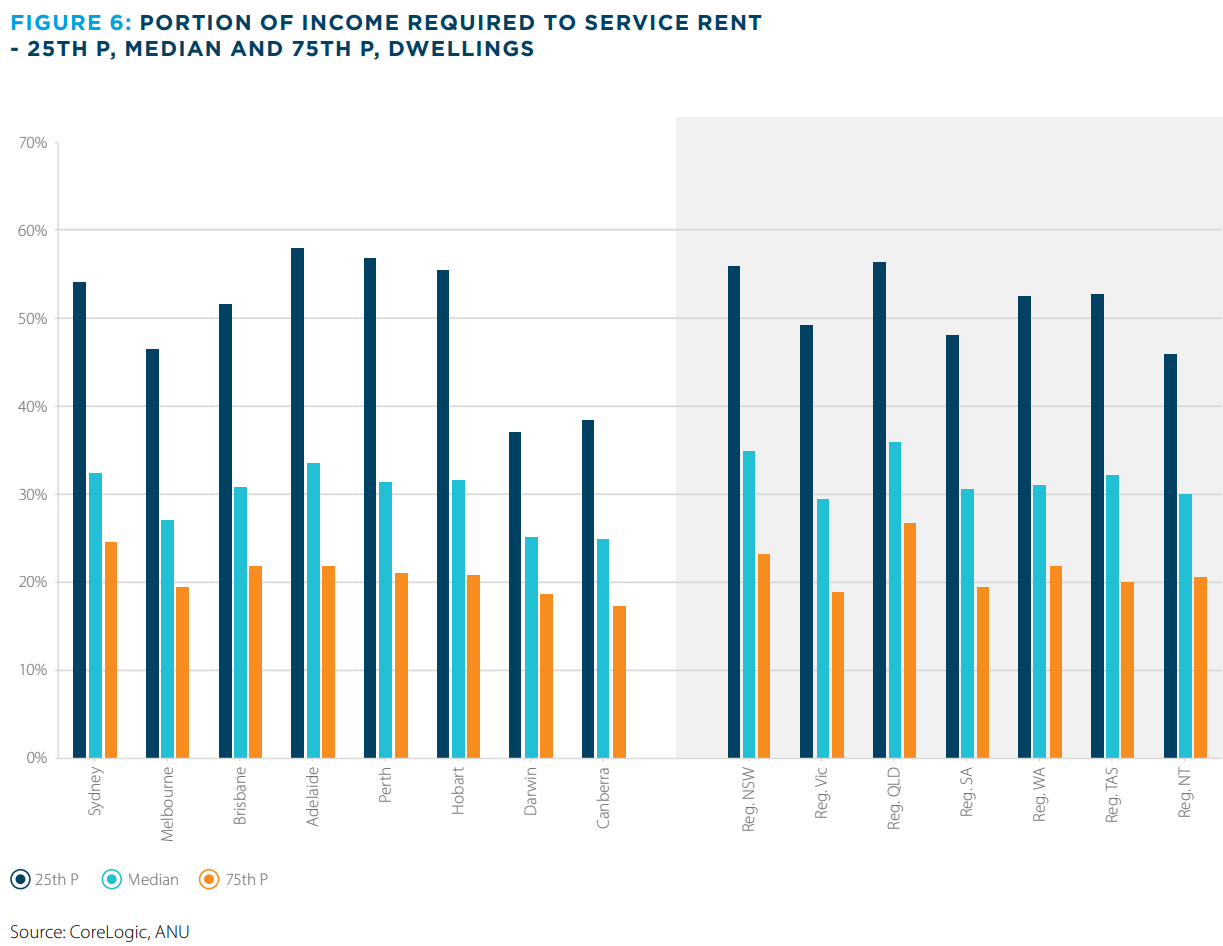
In short, higher-income households are also being driven onto the private rental market because the purchase cost of housing has risen beyond reach. And this is squeezing lower-income households hard, driving many into deep financial stress, shared housing, or homelessness.
The situation will continue so long as the purchase cost of housing continues to rise and the federal government continues to import renters into Australia via net overseas migration at a rate beyond the nation’s capacity to build homes and infrastructure.
Rising housing costs are putting pressure on all household groups. However, as always, the poor are being hurt the most.
Hence the proliferation of tent encampments across Australia’s major cities.

